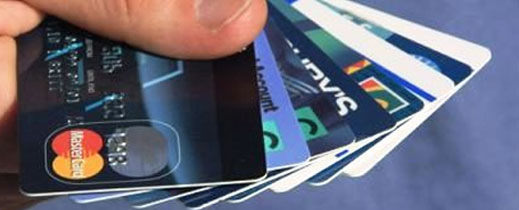Reporting ATM Theft
How to Report ATM Theft
- Here are some important tips on how to Report ATM Theft, for shoppers and merchants.
Reporting Stolen ATM Cards
Report the loss or theft of your credit cards and your ATM or debit cards to the card issuers as quickly as possible. Many companies have toll-free numbers and 24-hour service to deal with such emergencies. It's a good idea to follow up your phone calls with a letter. Include your account number, when you noticed your card was missing, and the date you first reported the loss.
You also may want to check your homeowner's insurance policy to see if it covers your liability for card thefts. If not, some insurance companies will allow you to change your policy to include this protection.
Credit Card Loss or Fraudulent Charges (FCBA). Your maximum liability under federal law for unauthorized use of your credit card is $50. If you report the loss before your credit cards are used, the FCBA says the card issuer cannot hold you responsible for any unauthorized charges. If a thief uses your cards before you report them missing, the most you will owe for unauthorized charges is $50 per card. Also, if the loss involves your credit card number, but not the card itself, you have no liability for unauthorized use.
After the loss, review your billing statements carefully. If they show any unauthorized charges, it's best to send a letter to the card issuer describing each questionable charge. Again, tell the card issuer the date your card was lost or stolen, or when you first noticed unauthorized charges, and when you first reported the problem to them. Be sure to send the letter to the address provided for billing errors. Do not send it with a payment or to the address where you send your payments unless you are directed to do so.
ATM or Debit Card Loss or Fraudulent Transfers (EFTA). Your liability under federal law for unauthorized use of your ATM or debit card depends on how quickly you report the loss. If you report an ATM or debit card missing before it's used without your permission, the EFTA says the card issuer cannot hold you responsible for any unauthorized transfers. If unauthorized use occurs before you report it, your liability under federal law depends on how quickly you report the loss.
For example, if you report the loss within two business days after you realize your card is missing, you will not be responsible for more than $50 for unauthorized use. However, if you don't report the loss within two business days after you discover the loss, you could lose up to $500 because of an unauthorized transfer. You also risk unlimited loss if you fail to report an unauthorized transfer within 60 days after your bank statement containing unauthorized use is mailed to you. That means you could lose all the money in your bank account and the unused portion of your line of credit established for overdrafts. However, for unauthorized transfers involving only your debit card number (not the loss of the card), you are liable only for transfers that occur after 60 days following the mailing of your bank statement containing the unauthorized use and before you report the loss.
If unauthorized transfers show up on your bank statement, report them to the card issuer as quickly as possible. Once you've reported the loss of your ATM or debit card, you cannot be held liable for additional unauthorized transfers that occur after that time.

